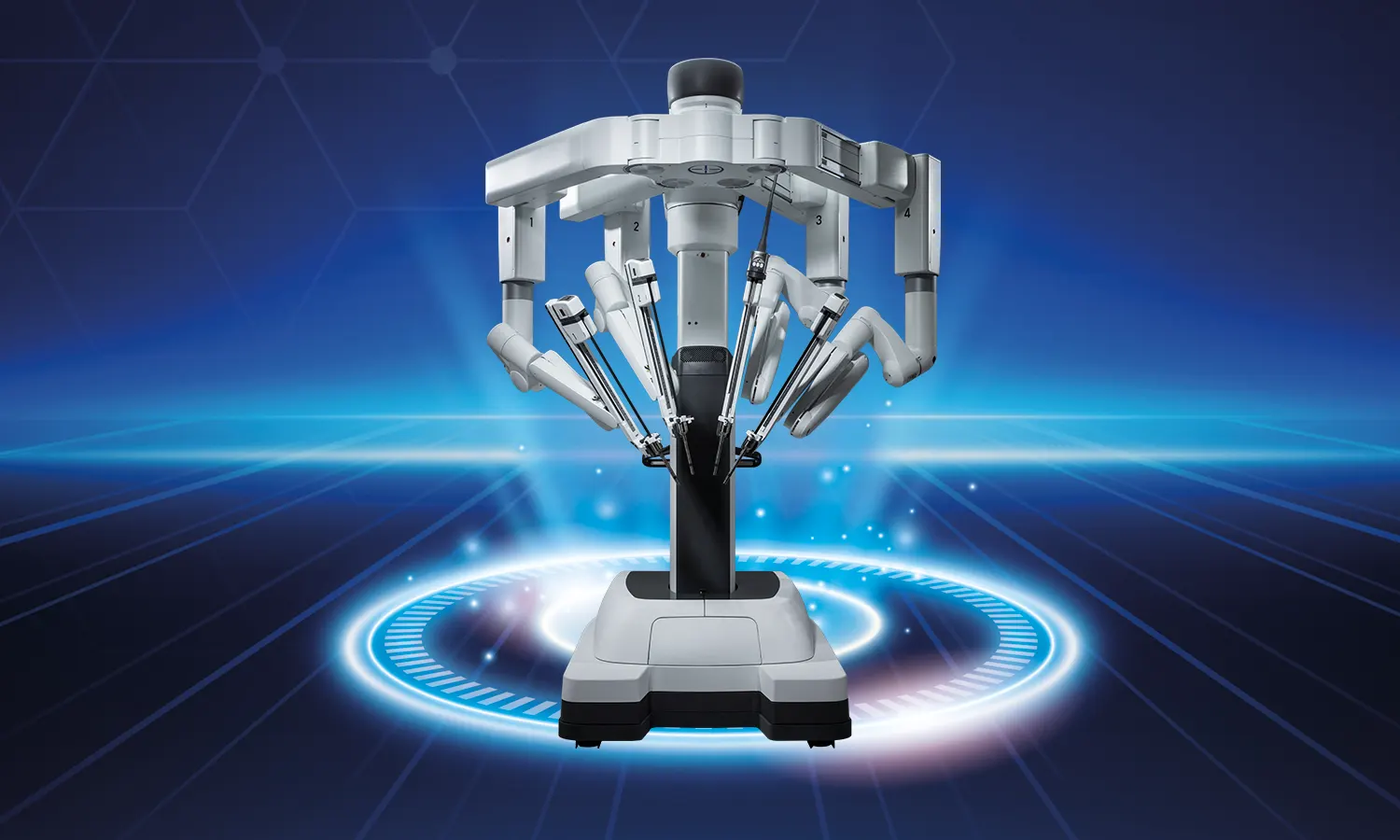- Call Today +90 537 762 59 24
- Open Hour Open 24 Hours

The advent of robotic surgery traces its origins to the pioneering efforts of NASA researchers, who initially developed this cutting-edge technology to conduct surgical procedures on astronauts in space. This transformative approach, rooted in laparoscopic surgical techniques, has significantly overcome challenges inherent in conventional methods. The utilization of robotic systems, featuring highly maneuverable arms and a surgeon-controlled 3-dimensional camera system, has marked a paradigm shift in the landscape of closed surgical applications.
Robotic surgery emerges as a superior alternative, outperforming classical laparoscopy and open surgery on multiple fronts. Patients undergoing robotic procedures benefit from reduced blood loss, diminished pain levels, accelerated return to work, earlier discharge times, and a minimization of incisions. This cumulative advantage positions robotic surgery as a highly effective and patient-friendly option compared to traditional surgical methodologies. Our hospital takes pride in housing a proficient team of experts, all equipped with certifications in robotic surgery, having successfully executed over 1800 procedures to date, contributing to the well-being and satisfaction of our patients.
The versatile Da Vinci Robotic Surgery Systems find application across diverse medical branches, including:
In urology, the implementation of robotic surgery addresses critical conditions such as:
Noteworthy advantages include enhanced tumor control, minimal urinary incontinence, and a reduced incidence of postoperative sexual dysfunction, making robotic surgery a preferred choice in urological interventions.
Gynecological diseases requiring surgical intervention, such as myomas, ovarian cysts, and issues like vagina, bladder, uterine prolapse, and urinary incontinence, find effective and reliable solutions through the precision and advancements offered by robotic surgery. Patients facing the prospect of surgical treatment can alleviate concerns about the impact on their daily lives, recovery times, and sexual health, thanks to the numerous advantages inherent in robotic surgery.
The attainment of a mastership certificate by surgeons who surpass a predefined threshold of robotic operations attests to the proficiency and expertise in this specialized field. One such exemplar is Gynecology and Obstetrics Specialist Prof. Dr. Aydan BİRİ, recognized as an "Expert robotic surgeon" for her extensive and successful contributions to this domain.
Robotic heart surgeries represent the pinnacle of technological advancement in cardiac procedures. Leveraging the da Vinci robotic system, these surgeries involve entering between the ribs with incisions smaller than 1 cm, eliminating the need for opening the chest. The spectrum of robotic cardiac surgeries includes coronary bypass, repair and replacement of mitral and tricuspid heart valves, removal of tumors, and arrhythmia surgery. Notably, this approach substantially reduces the need for blood transfusions during surgery, minimizes postoperative pain, and facilitates a quicker return to normalcy for patients.
In the realm of thoracic surgery, particularly in the treatment of lung cancer, robotic surgery stands as the latest technological method. Our hospital boasts the infrastructure to perform a comprehensive range of thoracic surgery operations, with a special emphasis on lung cancer treatments, utilizing state-of-the-art robotic surgery techniques.
Colon cancer treatment, typically necessitating surgical intervention, is optimized through robotic surgery. Patients experience reduced pain, a diminished risk of bleeding during the operation, a lower likelihood of surgical infections, and shorter hospital stays, highlighting the effectiveness and patient-centric nature of robotic surgery in this domain.
Hernia surgeries represent another area where robotic surgery offers distinctive advantages. Hernias, often necessitating surgical repair, find a solution through robotic surgery, facilitating the separation of the hernia area from intact tissues with ease and precision. The 3-dimensional imaging, sensitivity, and agility of robotic surgery aid in the application of patches, and a notable advantage is the posterior application of the patch, reducing the risk of hernia recurrence compared to traditional frontal approaches.
In essence, the comprehensive and detailed application of robotic surgery across various medical domains underscores its transformative impact on modern healthcare. From urology to gynecology, cardiovascular to thoracic surgery, and beyond, the benefits of robotic surgery extend to patients' well-being, recovery, and overall satisfaction, positioning it as a cornerstone in the evolution of surgical techniques.
© 2026 Copyright by Private Koru Hospital. All rights reserved.
